How Natural Light Affects Your Mental Health
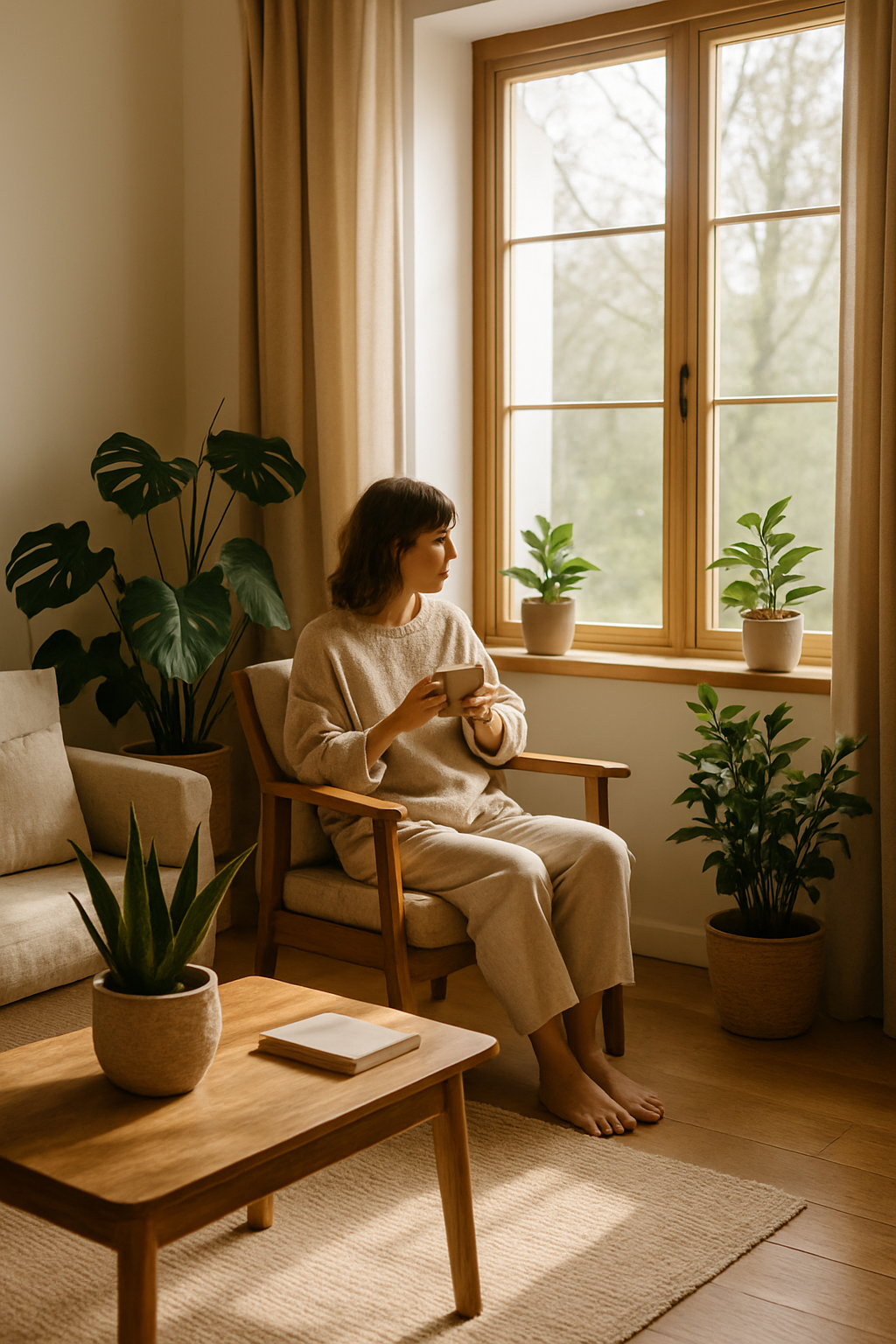
Creating a truly health-boosting home environment requires attention to numerous factors, but few are as powerful and often overlooked as natural light. While we instinctively seek sunshine for its warmth and brightness, the relationship between natural light exposure and mental health runs much deeper than simple preference. Research increasingly shows that natural light influences everything from your mood and energy levels to sleep quality and cognitive function. In fact, inadequate exposure to natural light has been linked to depression, anxiety, disrupted sleep cycles, and reduced productivity. By understanding and optimizing the natural light in your home, you can leverage this free resource to significantly improve your mental wellbeing—creating spaces that not only look beautiful but actively support your psychological health.
What You’ll Learn About Natural Light and Mental Health
- 🧠 How sunlight directly influences brain chemistry and mood regulation
- 🕰️ The crucial relationship between light exposure and your circadian rhythm
- ☀️ Practical strategies to maximize natural light in any living space
- 🌙 How to balance natural light with proper darkness for optimal sleep
- 🏠 Room-by-room lighting recommendations for better mental health
This article is part of our comprehensive guide on How to Turn Your Home into a Health-Boosting Space, focusing specifically on optimizing natural light for mental wellbeing.
The Science Behind Light and Mental Wellbeing
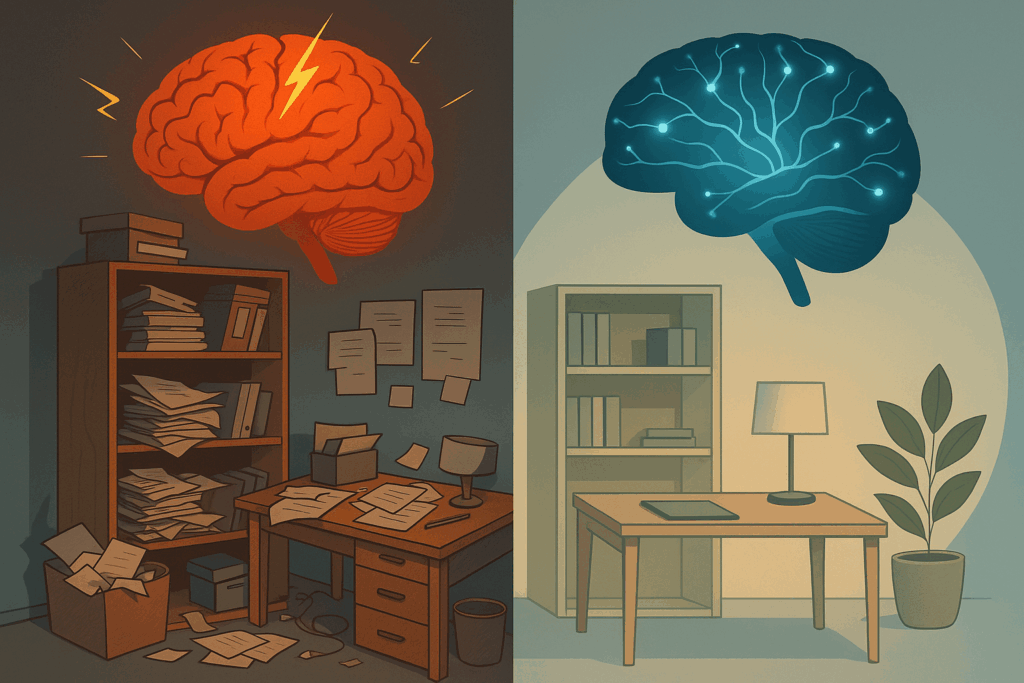
The connection between natural light and mental health is rooted in biology, not just aesthetics. A groundbreaking study published in the Journal of Clinical Sleep Medicine found that workers in offices with windows received 173% more white light exposure during work hours and slept an average of 46 minutes more per night than colleagues in windowless offices. This extra sleep translated to higher reported quality of life scores and fewer symptoms of depression.
The mechanism behind this powerful effect involves specialized photoreceptors in your eyes that don’t contribute to vision but instead communicate directly with your brain’s regulatory centers. These cells are particularly sensitive to the blue wavelengths abundant in natural daylight. When stimulated, they trigger cascading effects throughout your body:
- Suppression of melatonin (the sleep hormone) during daytime hours
- Production of serotonin (a mood-regulating neurotransmitter)
- Regulation of cortisol (stress hormone) release
- Synchronization of your internal body clock with natural day-night cycles
Dr. Victoria Revell, chronobiologist at the University of Surrey, explains: “Light is the most powerful time-giver for our internal body clock, which influences virtually every biological system in our bodies. When we don’t get enough natural light, these systems begin to fall out of sync, potentially leading to mood disorders, sleep problems, and even physical health issues.”
Morning Light: The Foundation of Mental Wellbeing
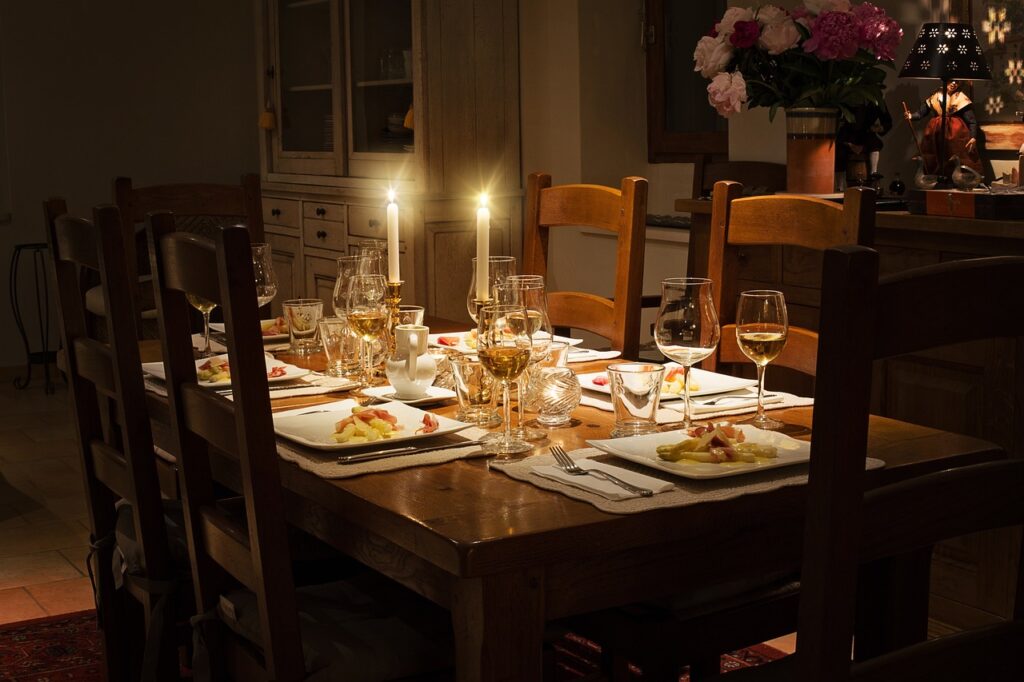
The timing of your light exposure matters as much as the quantity. Morning light exposure is particularly impactful for mental health, helping to properly set your internal clock for the day ahead.
Benefits of Morning Light Exposure
Research from Northwestern University found that people who received the majority of their bright light exposure before noon were less likely to experience symptoms of depression than those who received similar light levels later in the day. Morning light specifically:
- Suppresses melatonin production, helping you feel alert and energized
- Increases serotonin output, improving mood and focus
- Sets your circadian rhythm to promote better sleep 14-16 hours later
- Helps regulate appetite hormones, potentially reducing unhealthy cravings
Creating a Morning Light Routine
To harness these benefits, consider these specific strategies:
- Open all blinds and curtains within 15 minutes of waking
- Have your morning coffee near a window or outdoors when weather permits
- Position your breakfast area to receive eastern light
- Consider morning activities (stretching, reading, meditation) in the brightest area of your home
PRO TIP: If you struggle with mornings, try a dawn simulator alarm clock that gradually increases light levels before your wake time, mimicking a natural sunrise even in dark winter months.
For maximum benefit, aim for at least 15-30 minutes of bright morning light exposure. If your home lacks natural morning light due to its orientation, consider spending time on a porch, balcony, or even taking a short morning walk. This morning light routine complements other aspects of creating a health-promoting home environment, particularly when paired with proper ventilation strategies.
Optimizing Your Home for Maximum Natural Light
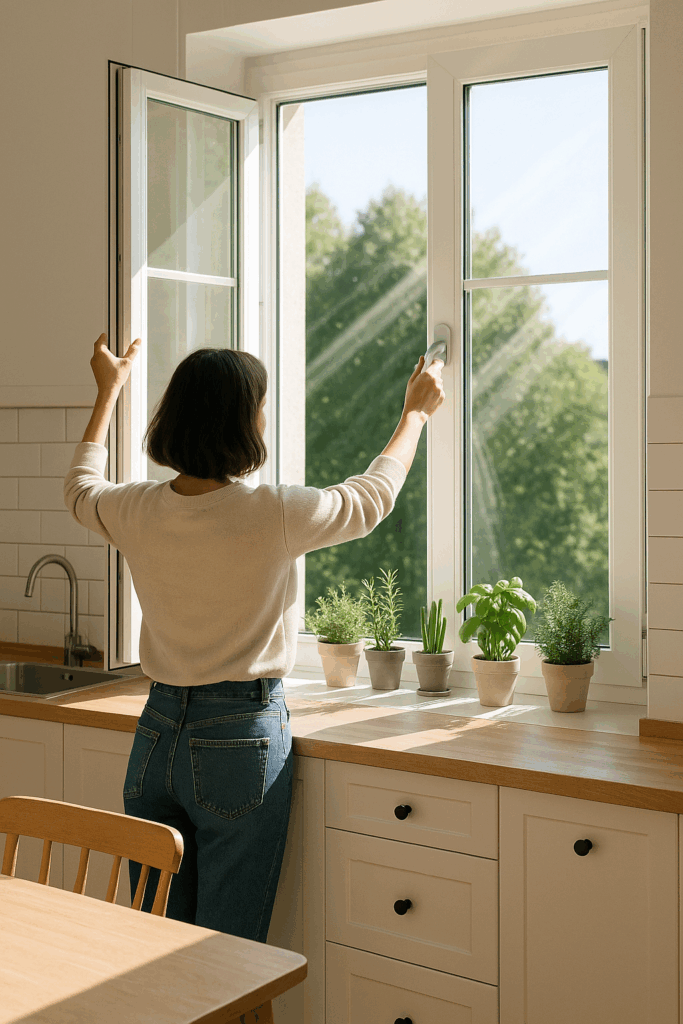
Beyond simply opening curtains, there are numerous strategies to maximize the natural light in your living spaces. These approaches can be particularly helpful if you’re dealing with limited windows or suboptimal home orientation.
Light-Enhancing Design Strategies
| Strategy | Implementation | Mental Health Benefit |
|---|---|---|
| Strategic mirror placement | Position mirrors opposite windows to reflect light deeper into rooms | Extends light reach, reducing dark corners that can feel psychologically oppressive |
| Light-colored paint | Use high-LRV (Light Reflectance Value) paints, especially on walls adjacent to windows | Maximizes the psychological impact of limited natural light by reflecting it throughout the space |
| Reflective surfaces | Incorporate glossy finishes and metallic accents selectively | Creates the perception of greater brightness, which studies link to improved mood |
| Glass or translucent dividers | Replace solid barriers with frosted glass where privacy is needed | Allows light to penetrate deeper into interior spaces while maintaining separation |
| Decluttered windowsills | Keep window areas clear of obstructions | Maximizes the psychological benefit of views and light penetration |
“The most effective home lighting plans work with your specific architecture rather than against it,” notes architectural psychologist Dr. Lindsay Havens. “Understanding how light naturally moves through your space throughout the day allows you to enhance its mental health benefits without major renovations.”
These physical modifications work particularly well alongside the air-purifying plants discussed in our health home series, as many plants thrive in and enhance naturally lit environments.
Adaptive Light Management Throughout the Day
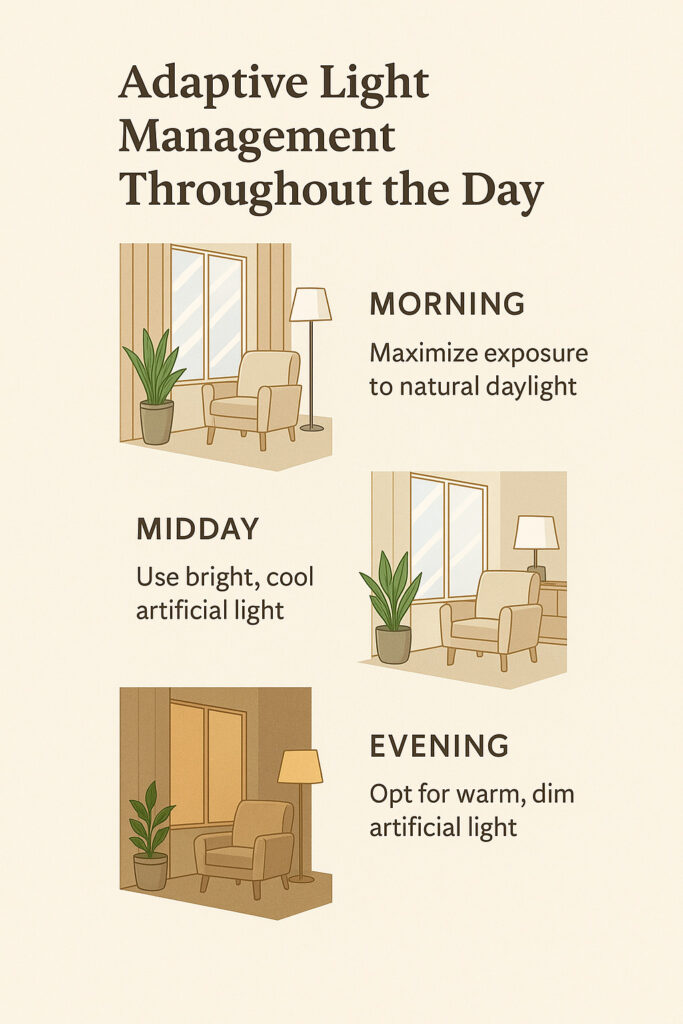
Creating a mentally healthy light environment isn’t just about maximizing brightness—it’s about adapting light levels appropriately throughout the day to support your body’s natural rhythms.
Room-Specific Light Strategies
Home Office:
- Position desk perpendicular to windows (not facing or backing) to prevent glare while maximizing light
- Use adjustable blinds to control direct sunlight without blocking it completely
- Consider light shelves or reflectors to direct light deeper into the room
Kitchen:
- If possible, make this space a priority for natural light, as it’s typically used during daytime hours
- Use light-colored backsplashes to amplify available light
- Keep windowsills clear of items that block light
Bedroom:
- Balance natural daylight with the ability to create darkness for sleeping
- Consider programmable window treatments that open gradually in the morning
- Position the bed to receive morning light while allowing evening darkness
Living Areas:
- Create varied lighting zones that allow family members to access different light levels as needed
- Position most frequently used seating in areas with good natural light
- Use light-colored furniture that won’t absorb available daylight
Maria Chen, an interior designer specializing in wellness-focused spaces, shares: “I worked with a client experiencing seasonal depression who transformed her mental health by reconfiguring her living space to maximize morning light exposure. Simply moving her morning routine activities to her naturally brightest room made a remarkable difference in her mood and energy levels throughout winter.”
Overcoming Light Limitations in Challenging Spaces
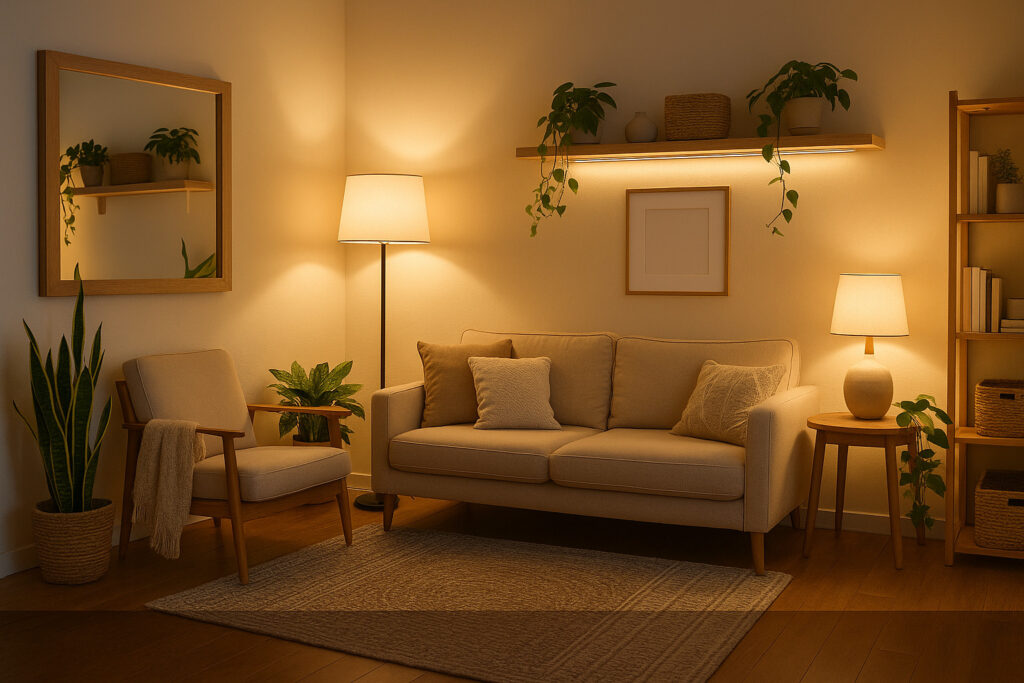
Not all homes are blessed with abundant natural light. Apartments with limited windows, basement units, or homes in densely built urban areas may face significant light restrictions. However, there are effective strategies to compensate for these limitations.
Solutions for Light-Restricted Environments
If your living situation limits natural light access:
- Prioritize outdoor time during daylight hours
- Take brief “light breaks” throughout the day
- Position your workspace near whatever natural light is available
- Consider morning or lunch walks to supplement limited home light
- Invest in full-spectrum lighting
- Choose bulbs with a color temperature of 5000-6500K (similar to daylight)
- Place these lights in areas where you spend morning and daytime hours
- Consider smart lighting that changes temperature throughout the day
- Use light therapy lamps strategically
- 10,000 lux light therapy lamps can help supplement natural light
- Use for 20-30 minutes each morning while eating breakfast or working
- Position 16-24 inches from your face (not looking directly at the light)
ATTENTION: If you experience persistent low mood or seasonal depression despite light optimization, consider consulting a healthcare provider about light therapy or other interventions. Light therapy lamps, while helpful, should be used according to guidelines, especially for those with bipolar disorder or certain eye conditions.
These strategies can work effectively alongside other elements of a health-boosting home, particularly when combined with proper ventilation and stress-reducing plants that thrive even in lower light conditions.
Seasonal Adjustments for Year-Round Light Benefits
Our light needs change dramatically with the seasons, particularly in northern latitudes where winter daylight hours are significantly reduced. Creating a seasonally adaptive approach helps maintain mental wellbeing throughout the year.
Winter Light Strategies
During months with limited daylight:
- Adjust your schedule to maximize exposure to whatever natural light is available
- Keep windows completely unobstructed during daylight hours
- Position activities in the brightest areas of your home during available sunlight
- Consider a light therapy lamp for supplemental bright light exposure
- Use dawn simulator alarm clocks to ease winter wake-ups
Summer Light Management
During longer daylight periods:
- Create zones with adjustable light levels to allow for evening wind-down
- Consider blackout options for bedrooms to maintain sleep quality during early sunrise
- Create outdoor living spaces that take advantage of evening light
- Establish a consistent sleep-wake schedule despite variable daylight
By adapting your approach seasonally, you maintain the positive mental health benefits of appropriate light exposure throughout the year, which supports the broader goals outlined in our guide to creating a health-boosting home environment.
Your Natural Light Action Plan for Better Mental Health
To implement a comprehensive natural light strategy for improved mental health, consider this phased approach:
- Assessment Phase
- Track natural light patterns in different rooms throughout the day
- Identify your brightest spaces during morning hours
- Note any areas where light is being unnecessarily blocked
- Quick Wins Implementation
- Remove unnecessary window coverings or replace with light-filtering options
- Clear windowsills and reposition furniture that blocks light
- Add mirrors to extend light reach in dimmer areas
- Habit Integration
- Establish a morning routine in your brightest space
- Create consistent daily patterns of light exposure
- Adjust evening lighting to support healthy sleep onset
- Seasonal Adaptation
- Prepare seasonal strategies before they’re needed
- Consider supplemental options for challenging periods
- Adjust daily routines to maximize available natural light
By addressing natural light as a key component of your health-promoting home environment, you’re leveraging one of nature’s most powerful tools for mental wellbeing—one that works synergistically with strategies like introducing air-purifying plants and improving indoor air quality.
Frequently Asked Questions
☀️ Can natural light exposure really impact depression and anxiety?
Yes, substantial research confirms this connection. A study in the Journal of Affective Disorders found that increased natural light exposure was associated with a 40% reduced risk of depression symptoms. The effect works through multiple pathways including vitamin D production, serotonin regulation, and circadian rhythm stabilization.
🏙️ I live in an apartment with only north-facing windows. How can I still get mental health benefits from light?
North-facing windows provide consistent, glare-free indirect light. Position activities requiring good visibility near these windows and supplement with full-spectrum lighting. Consider reflective surfaces to maximize the light you do receive, and prioritize outdoor time during daylight hours when possible.
💡 Are “happy lights” or light therapy lamps effective substitutes for natural light?
While not perfect replacements for sunlight, light therapy lamps at 10,000 lux can significantly help supplement natural light exposure, especially for mood regulation. They’re most effective when used in the morning for 20-30 minutes and positioned correctly. They lack some of sunlight’s full spectrum benefits but can significantly improve symptoms of seasonal mood changes.
🛌 Does light exposure affect sleep beyond just making me feel tired?
Absolutely. Light exposure patterns regulate your entire sleep-wake cycle by controlling melatonin production. Morning light resets your internal clock, while excessive evening light (especially blue light) delays melatonin production. Proper light management throughout the day is fundamental to achieving restorative sleep, which in turn affects virtually every aspect of mental health.
Additional Resources
From Our Health Home Series
- How to Turn Your Home into a Health-Boosting Space – Our comprehensive guide to creating a home that supports total wellbeing
- 5 Natural Ways to Improve Indoor Air Quality – Complement your light strategies with better air quality
- Best Air-Purifying Plants to Reduce Stress at Home – Select plants that thrive in your specific light conditions
- How Home Organization Can Help Reduce Anxiety – Organize your space to maximize light flow
External Resources
- Center for Environmental Therapeutics – Expert guidance on light therapy and circadian rhythms
- International Association of Lighting Designers – Professional resources on healthy lighting design
How has natural light (or lack thereof) affected your mood and mental wellbeing? Share your experiences in the comments below and discover how others have transformed their spaces for better mental health!
META DESCRIPTION: Discover how natural light directly impacts your mental health and learn practical strategies to optimize your home’s lighting for better mood, focus, and sleep quality.
TAGS: natural light mental health, daylight mood benefits, circadian rhythm lighting, home light optimization, morning light exposure, seasonal light strategies, light therapy home



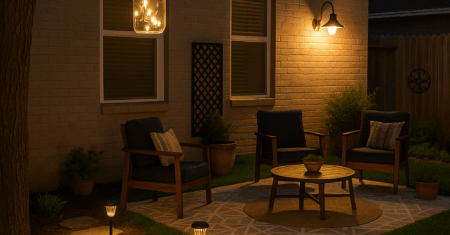
0 Comments